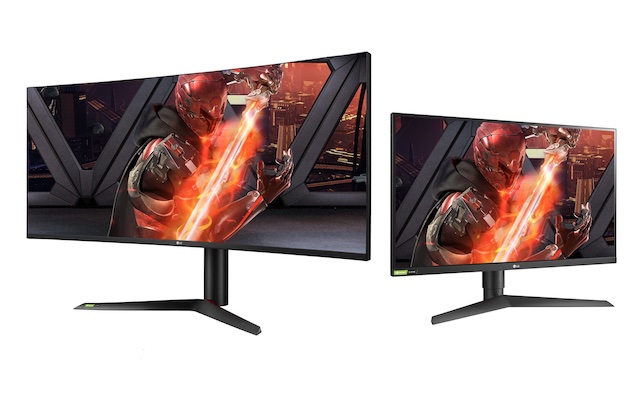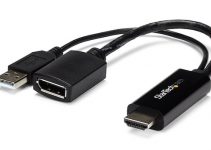There are multiple models of LG monitors, each with its specific feature and functionalities that make it unique. While that’s the case, monitors from the same manufacturers often require the same procedures to troubleshoot because of the consistency in their architecture.
This article will give guidelines for troubleshooting an LG Monitor with sound failure. If you’re having sound-related issues with your hardware, continue reading to find the cause and probable solution.

LG Monitor Sound Not Working: Likely Causes
An LG monitor sound may not work for several reasons, with most being software problems and a few caused by hardware issues.
- No built-in speakers
- Desired audio source
- Low volume
- PC volume settings
- Loudness equalization settings
- Bad audio cable
- Incompatible/outdated audio driver
- BIOS audio settings
LG Monitor Sound Not Working: DIY Fixes
Much of these issues are often easy to fix; although you’d need to be handy for things to be easier, you don’t necessarily need to be tech-savvy.
No Built-in Speakers
When going through any troubleshooting procedure, it’s important to always start from the obvious/simple problems. In the case of an LG Monitor sound not working, it’s the absence of a built-in speaker.
You need to check if your LG monitor has built-in speakers or not; if it does, then the problem might be something else entirely. However, if it doesn’t, you may just proceed to get an external speaker right away. You can check out the specs of your LG monitor by entering the model number into the LG monitor manual lookup.
Desired Audio Source
After you have confirmed the presence of a speaker in your hardware, you’d want to confirm the audio source selected on the PC. Most times, this may be your problem if the monitor’s audio isn’t set as the default audio source.
To change your audio source on most PCs (Windows 10 or higher), click on the speaker/sound icon on the notifications toolbar and select your preferred audio source. For some of us using a dedicated speaker unit, we may have to adjust every time we choose to use our monitor’s speakers instead of the dedicated speaker unit.
Low Volume
Well, sometimes, both procedures above may be overkill; a low volume setting can also cause the problem. LG monitors with in-built speakers often allow users to adjust the volume using the joystick at the bottom of the monitor. Remember not to press as this will take you to the monitor’s main menu; tilt left or right to reduce and increase the volume.
At any rate, if your LG monitor model doesn’t come with a joystick and it’s got an in-built speaker, you can refer to the LG monitor manual lookup to find how to turn up the volume correctly.
PC Volume Settings
Still on the volume issue, only this time, you’re working on the PC. Sometimes, the PC’s volume settings can be the cause of your LG monitor sound not working, especially if you use multiple audio units and you’ve just changed the settings. You may need to increase the volume settings on for the LG monitor as an output audio device.
You can do this by right-clicking the speaker/sound icon on the toolbar and selecting open sound settings. Confirm that the master volume is fairly high, then open the volume mixer by right-clicking on the volume icon again. Now, you’d want to adjust the LG monitor volume to your taste.
Loudness Equalization Settings
If you use a Windows 10 PC or higher, this feature can automatically control your PC’s loudness – you may not even need the previous settings if you can get it right. The automatic control normalizes the volume such that it amplifies the sound coming from the media when it’s too low and reduces it when it’s too high.
To set up, you’d want to navigate to Control Panel > Sound > Enhancements, then click ‘Loudness Equalization’ (make sure you leave its box checked).
Bad Audio Cable
If all the above procedures fail, your problem may be a bad audio cable. However, it’s quite tricky to diagnose if the problem is your cable; and you don’t want to buy a new one you may not need. Most LG monitors with built-in speakers carry audio signals through the HDMI/DP cable, while others require a separate audio jack connection.
Whichever connection you’re using, take the cable out and examine for loose ends or breaks between the wires. Whether you see signs of damage or not, you’d want to try a different audio cable to make sure. If you have a model with multiple ports (HDMI, DP, and VGA), you can try them all out to ensure any error doesn’t come as a fluke. If a different cable solves the problem, then you had a bad cable and should look to purchase a new one.
Incompatible/Outdated Audio Driver
Perhaps one of the last resorts before taking the TV back to the vendor or a technician is to confirm the state of the audio driver. When you get new hardware, usually, the PC may not have its required driver installed, especially if the hardware doesn’t run on plug and play.
First, you want to check if the currently installed sound driver is working properly before installing or updating to a more suitable version. Navigate to Control Panel > Device Manager > Sound, video, and game controllers, then double click to check the status. If working properly, you want to go ahead and update the driver to rectify the sound problem with the LG monitor. Allow the PC to restart automatically, then start using the sound speakers on the LG monitor.
BIOS Audio Settings
Finally, the last thing to check before you can give up and visit the technician; is the PC’s BIOS. Sometimes, the PC’s audio might have been disabled from the BIOS. To open the BIOS, quickly press the ESC key during the startup.
It’s normal to have this problem when you purchase a new PC and possibly skip a couple of things in the setup. While that’s the case, this step is often not needed if you’ve not been able to use any audio gadget/tool with the PC before. If your PC can play audio through other means, the problem is definitely not with the BIOS.





